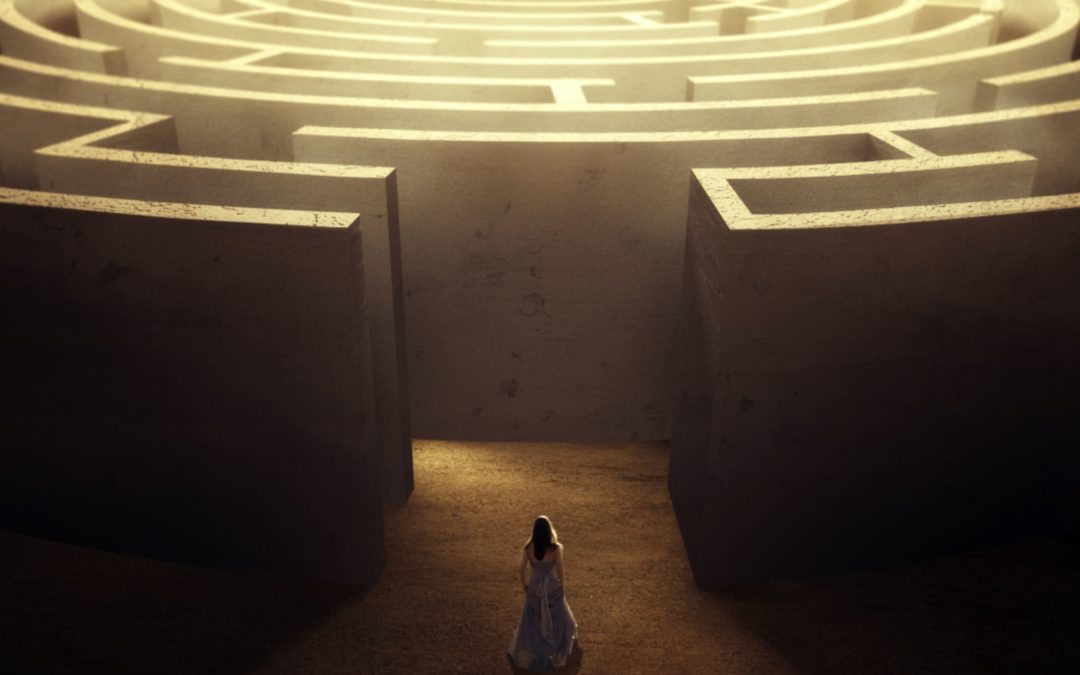Great heroines have a long tradition that you may or may not know about. There have been various periods in history where the heroine has taken center stage in our cultural stories, and I believe we’re in one of the most dynamic periods right now. I wrote a blog last week that laid bare my growing love and appreciation for heroines in our cultural stories. I outlined my belief that there is a narrative monomyth for heroines, in parallel with the Hero’s Journey. The responses I received only strengthened my belief that this topic needs more discussion and greater exploration.
For those who don’t know, a monomyth is a recurrent set of themes that appear in storytelling so pervasively that they essentially form one (“mono”) story (“myth”). A monomyth is significant in that its very presence suggests a beautiful common bond in the collective experience of human beings across cultures—independent of language, ethnicity, or national boundaries. The monomyth is structural, which means that it can be expressed over and over again in unique and diverse ways. Most of us barely notice the common themes.
On the link below, I outline the core concepts to what I’m calling the Heroine’s Labyrinth. This is a set of recurrent themes in heroine-centric stories that reflect historical realities as well as emerging archetypes and social change. Some readers will recognize these themes and patterns intuitively, having grown up with a rich history of heroines in literature or pop culture. You may or may not be surprised to discover that many heroines face villains who are part of their own native culture more so than distant villains from far off lands. You may or may not be surprised to discover that “home” doesn’t represent a place of safety or comfort for many heroines but instead, a source of captivity and forced conformity. You may or may not be surprised to learn that the heroine’s native culture, itself, stymies her so often that it becomes a complex labyrinth, keeping her trapped inside. Finally, you may or may not be surprised to find out that when a heroine enters single combat, she often does so while also shielding a vulnerable person close by her, sometimes just a few feet away. These themes differ from the Hero’s Journey is significant and meaningful ways.
Maybe none of these themes are surprising. But if you’re sparked by the idea of a heroine-oriented story arc like me, that’s okay! Some readers may dislike the notion of recurrent themes for heroines because they’re concerned that rigid models may perpetuate or reinforce gender stereotypes. But I came to the exact opposite conclusion. From what I can tell, the heroine-centric monomyth often sets the goal of breaking out of gender stereotypes either consciously or unconsciously. Heroines model behaviors and perspectives for overcoming gender roles and stepping outside cultural norms. Heroines challenge our native cultures in new ways and unmask duplicitous minotaurs, who hide in plain sight. They save civilization in different and sometimes revolutionary ways. I think heroines are teaching all of us new ways to be heroic.
So, if heroines are exhibiting a pattern in our cultural stories, shouldn’t we pay attention? Might such a discussion only serve as a guiding light for future generations of young women (and men), while connecting all of us to a community of heroines who live out this powerful monomyth?
I believe the Heroine’s Labyrinth is inclusive to all people. It’s universal, just like the Hero’s Journey. In future blogs, I’ll discuss male characters who are trapped in the labyrinth and female characters who take the journey. The best stories pull from both models. Keep in mind, studying any paradigm is merely a starting point, a centerpiece for exploring ideas and gaining a greater understanding of the world in which we live, even if some of those worlds are fictional. I say, follow the example of the heroine. A heroine almost always begins with a tried and true preexisting model. And then she breaks out of it.
Want to see? Check out the Heroine’s Labyrinth here

Hmm. I am about to teach the hero’s journey to a group of young males, yet the story we have chosen, although there is a male protagonist, more closely follows this model.
Email me at d@douglasaburton.com and I’ll be happy to share (I have a bunch of example of each core concept in film and literature that I didn’t mention in this blog). I believe that both models are inclusive.
Hi Douglas
I have tried to send you e-mail but it has come back as undeliverable. My work e-mail is : lockleyt@marash.qld.edu.au
Ooh please include me
While that’s a common misreading of Campbell, it’s strong for his point, let alone for the actual truth (Campbell was extremely overeager and you need to read something modern about the monomyth and stop claiming it’s the outgrowth of Jungian archetypes lol).
These are frameworks of analysis, not proof that all tales are the same – and this one isn’t even a structure, you’ve identified specific plot elements and themes, which makes it a cliché rather than a myth rising from the collective unconsciousness.
Lastly, you have poorly distinguished this from the hero’s journey, which also involves the breaking of social norms, the gathering of transfigurative knowledge, and the use of that knowledge to reform society. It is difficult to tell if you’re actually proposing anything concrete.
I have been playing with a premise that the feminine story is more an archetypal coming home than the males archetypal journey outward…I gave a talk at the Crones Counsel this fall and brought them my “Egg Meditation” – which uses a beckoning poem to move us ever inward toward the “unknown infinity” of the feminine soul. Still figuring and working on the idea but I love finding pieces like this. Something here.